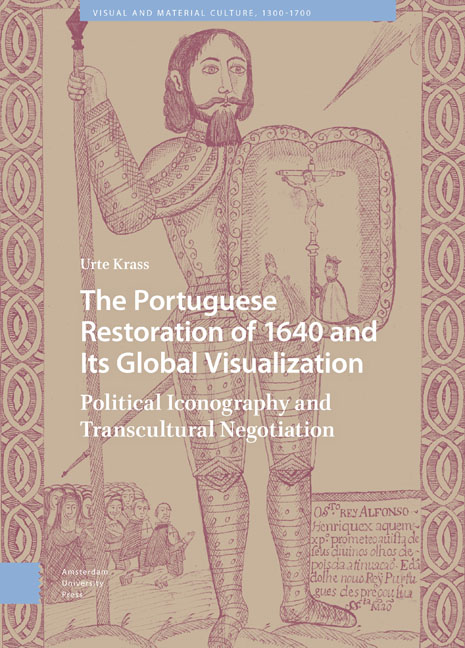 The Portuguese Restoration of 1640 and Its Global Visualization
The Portuguese Restoration of 1640 and Its Global Visualization Published online by Cambridge University Press: 13 February 2024
Abstract: John IV died on 6 November 1656. A funeral apparatus was planned in the Church of São Vicente de Fora. The planned iconographical program attempted a balance between traditional iconographies and innovative pictorial ideas. One of the paintings described in the source is iconographically unique and deserves an in-depth analysis: it plays on the idea of the headless body of state that John IV had revived, at a time when one of Portugal's most important allies, Charles I of England, had in fact lost his head. This chapter explores the extent to which the beheading of the English king and the images disseminated in its aftermath, the widespread European metaphor of the “body of state,” and the planned painting on the Lisbon castrum doloris may be connected.
Keywords: castrum doloris, ephemeral art, body of the state , decapitation, Charles I of England
The Plans for the Castrum Doloris
On 6 November 1656, sixteen years after his elevation to the throne, John IV of Braganza died, aged fifty-two. He was survived by two sons and two daughters. Dom Theodosio, the crown prince, had died three years before, aged nineteen. On his father's death, John's second oldest son, Afonso, was only thirteen and both physically and intellectually weak due to a childhood illness, so John IV's widow, Luísa de Gusmao, governed in his place. (In 1668, Afonso would be declared incompetent by his younger brother, Pedro, and exiled to the Azores.) The funeral rites for the first Portuguese king after Spanish hegemony—and the first king in the Braganza line—took place in the Church of Sao Vicente de Fora (fig. 105). This choice of location represents a complex decision. For not only St. Vincent of Valencia but also the building dedicated to him was closely tied to the Spanish crown. In 1582, Philip II had arranged for this church's construction on the site of an older building. The older structure had been erected in consequence of a vow made by the first Portuguese king, Afonso Henriques, after taking back Lisbon from the Almoravid Muslims in 1147.
To save this book to your Kindle, first ensure [email protected] is added to your Approved Personal Document E-mail List under your Personal Document Settings on the Manage Your Content and Devices page of your Amazon account. Then enter the ‘name’ part of your Kindle email address below. Find out more about saving to your Kindle.
Note you can select to save to either the @free.kindle.com or @kindle.com variations. ‘@free.kindle.com’ emails are free but can only be saved to your device when it is connected to wi-fi. ‘@kindle.com’ emails can be delivered even when you are not connected to wi-fi, but note that service fees apply.
Find out more about the Kindle Personal Document Service.
To save content items to your account, please confirm that you agree to abide by our usage policies. If this is the first time you use this feature, you will be asked to authorise Cambridge Core to connect with your account. Find out more about saving content to Dropbox.
To save content items to your account, please confirm that you agree to abide by our usage policies. If this is the first time you use this feature, you will be asked to authorise Cambridge Core to connect with your account. Find out more about saving content to Google Drive.